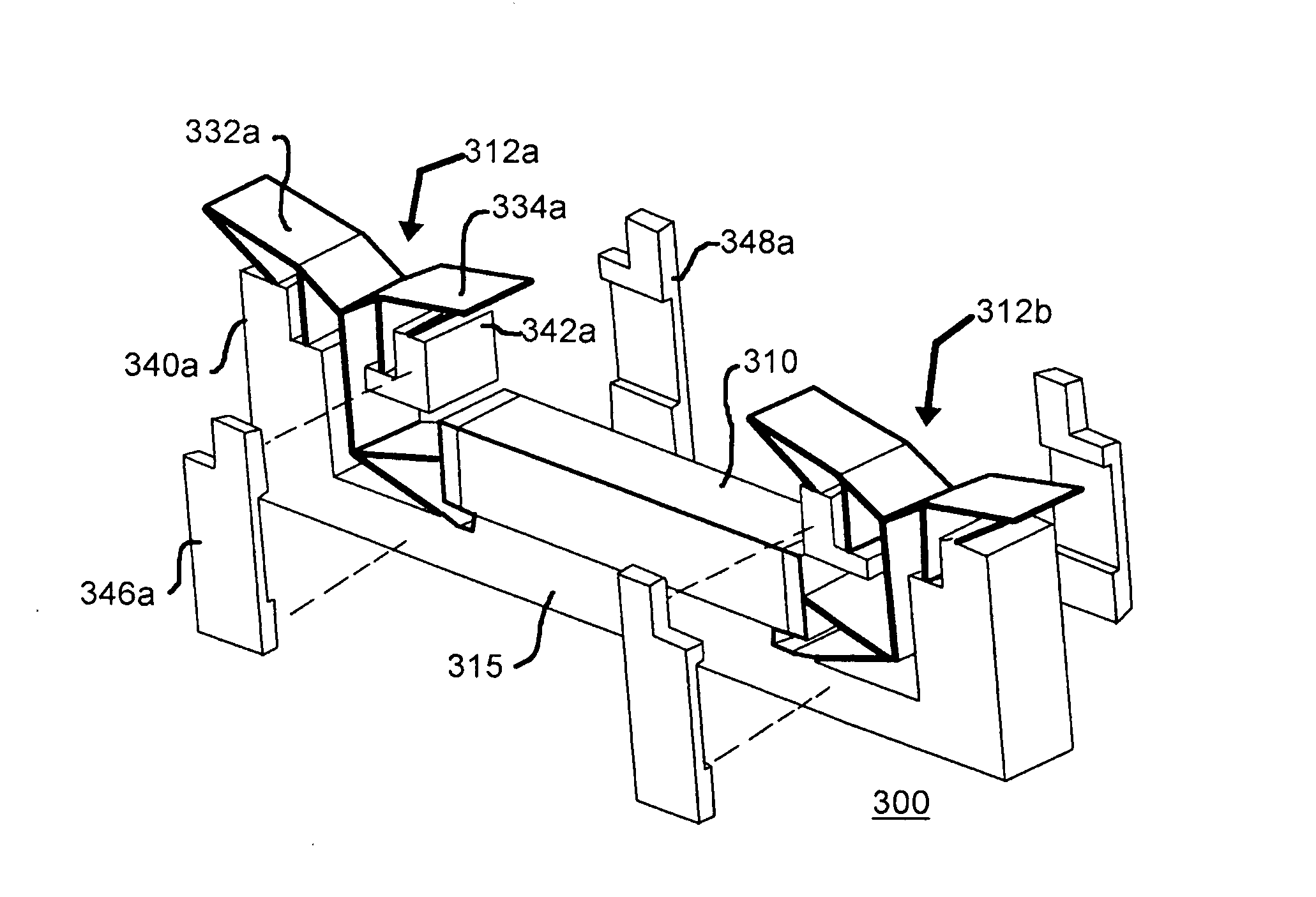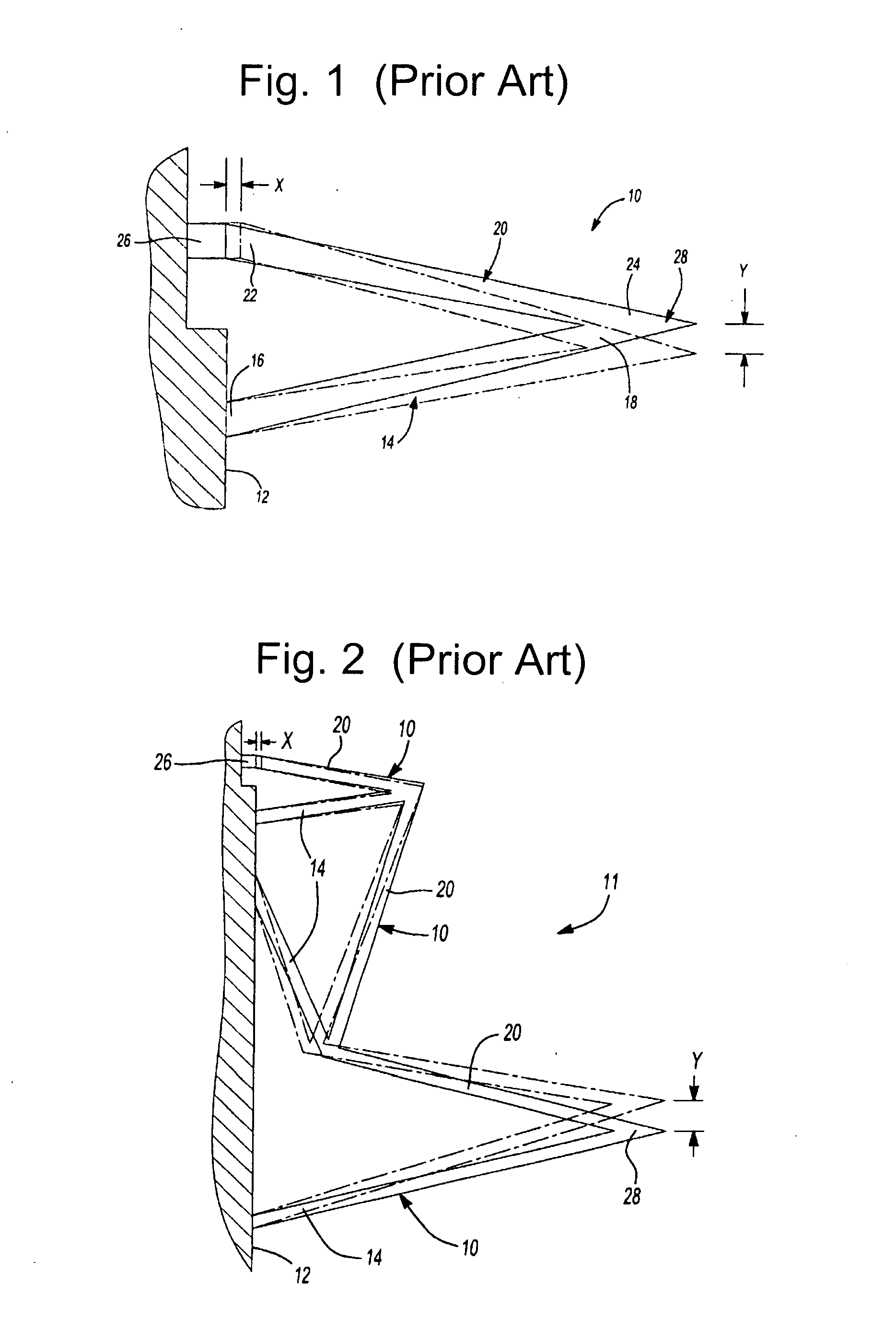Surface Vibration Using Compliant Mechanical Amplifier
a technology of mechanical amplifier and surface vibration, applied in the field of mechanical amplifier, can solve the problems of loss during transmission through the structure, and achieve the effects of reducing drag, reducing the size of laminar separation bubble, and reducing drag
- Summary
- Abstract
- Description
- Claims
- Application Information
AI Technical Summary
Benefits of technology
Problems solved by technology
Method used
Image
Examples
Embodiment Construction
[0084]FIG. 5 is a simplified schematic representation showing a plan view of a specific illustrative embodiment of a compliant transducer arrangement 300 having a piezoelectric actuator 310 and symmetrical outputs 312a and 312b. FIG. 6 is an isometric representation of compliant transducer arrangement 300 shown in FIG. 5. As shown in these figures, compliant transducer arrangement 300 has a base 315 on which is installed piezoelectric actuator 310. The piezoelectric actuator is, in this specific illustrative embodiment of the invention, mounted longitudinally parallel to longitudinal axis 320 of base 315.
[0085]In this specific illustrative embodiment of the invention, symmetrical outputs 312a and 312b of compliant transducer arrangement 300 are mirror images of each other, and therefore the supporting structure of only symmetrical output 312a will be described in detail. As seen in FIG. 5, piezoelectric actuator 310 is coupled at its output to a compliant transducer structure 325a t...
PUM
 Login to View More
Login to View More Abstract
Description
Claims
Application Information
 Login to View More
Login to View More - R&D
- Intellectual Property
- Life Sciences
- Materials
- Tech Scout
- Unparalleled Data Quality
- Higher Quality Content
- 60% Fewer Hallucinations
Browse by: Latest US Patents, China's latest patents, Technical Efficacy Thesaurus, Application Domain, Technology Topic, Popular Technical Reports.
© 2025 PatSnap. All rights reserved.Legal|Privacy policy|Modern Slavery Act Transparency Statement|Sitemap|About US| Contact US: help@patsnap.com



